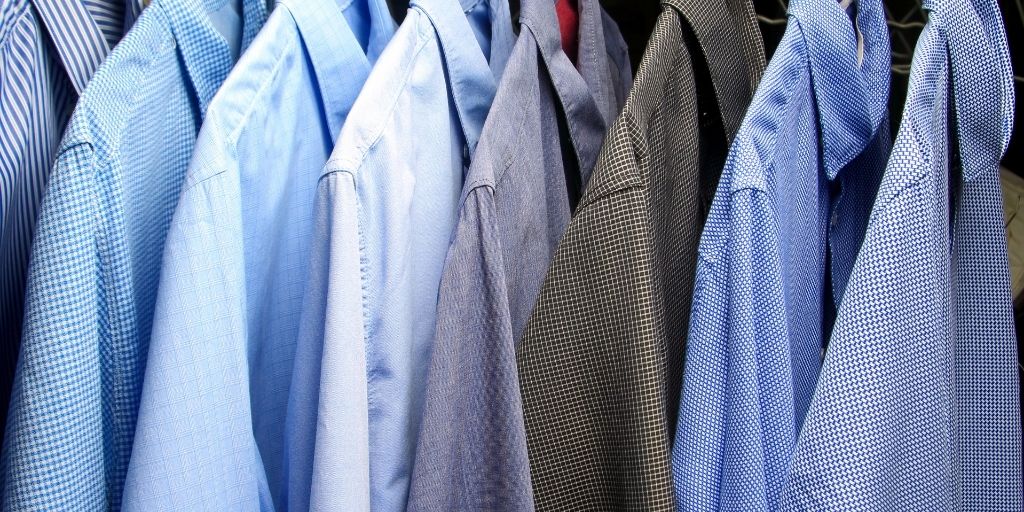I know that we all want to spend as little time and money as possible doing laundry. But sometimes delicate clothes need a bit more than just a quick wash and tumble dry. There are many things you can do to prolong your favourite garments’ life, one of which is getting them cleaned at a dry-cleaning establishment.
A commercial cleaner is a great place to get your clothes cleaned, but it’s important to know what clothing you should take there because not all items are appropriate. The type of fabric determines whether or not a garment requires washing or dry cleaning. Chemicals and improper cleaning methods can affect fabrics, damaging them and ruining the quality of your favourite silk dress, linen shirt, or fur coat.
In this article, we will outline some general rules and details on which items need to be professionally cleaned so you can save time and money.
Content Navigation
What is Dry Cleaning?
Dry cleaning is a process in which garments are cleaned without water, hence its name. It’s a faster and more efficient way of removing tough stains and soil from clothing, making it ideal for delicate fabrics such as silk. The most common solvent used by professionals for cleaning is perchloroethylene, which is also called “perc”. Today, dry cleaners use modern cleaning methods and chemicals with much less impact on the environment.
Clothes That Should Be Dry Cleaned
There are a few things you need to consider before dropping your clothes off at the dry cleaner. The type of fabric, colour and size should be considered when deciding what you will send for cleaning. If there is any history with stains or other items in the garments, this should also be communicated to ensure they can effectively clean it without damaging any part of the garment.
Linen
Natural fabric like linen is on the fence about whether it should be dry cleaned or not. Hand-washing with cold water can preserve the natural material; however, if you don’t wash linens properly, they will lose their quality after several washes. Sending linen to be dry-cleaned is the best way to deal with it.
Silk
If you want a 100% silk garment to last for years and still have the lustrous colour, it is best to send it in for professional dry cleaning, especially those with dark or bright dyes, lining, or prints. Hand-washing silk is sometimes feasible, but it isn’t always the best choice.
Leather
After a long period of storage, leather jackets and other clothing articles can become quite stiff. The chemicals used in dry cleaning will bring life back to these garments. The procedure will remove any stains without harming the leather; thus, it maintains its original structure.
Suede
Suede is a delicate fabric that needs special care. It cannot withstand being exposed to water. That’s why dry cleaning your suedes will be more efficient than trying to do so with wet cleaning. Though costly, it is the best method for removing stains.
Rayon
Though rayon is composed of cellulose fibres, it’s actually a semi-synthetic material. It has a high probability of shrinking and is susceptible to shape loss. When washed by hand or machine, dyes may bleed. Thus, it is usually preferable to have rayon dry cleaned rather than having it wet cleaned.
Dry cleaning is an excellent option for anyone who wants to keep their wardrobe in pristine condition. The professional quality service will protect the high-end items you’ve spent time and money on by preventing future damage.
Clothes That Shouldn’t Be Dry Cleaned
Cotton
As one of the most frequently used textiles for apparel, cotton does not require dry cleaning and is machine washable. Colours may be preserved by using either cold or warm water. In addition to washing, you can also use a dryer because most cotton clothing has been preshrunk.
Polyester and Other Synthetics
There are a plethora of synthetic fabrics on the market. Clothing composed of polyester, nylon, acrylic, spandex, and acetate can all be machine washed. Blends containing these materials, such as cotton/polyester or wool/nylon, can generally be put into the washing machine or hand-washed without the risk of shrinkage.
Wool
Fortunately, wool clothing can generally be washed by hand, so you won’t have to take it to the dry cleaners. You should, however, refrain from putting it into the washing machine.
Cashmere
Cashmere is a beautiful material for those who like the idea of luxury without any fuss. It’s lightweight and soft, making it easy to care for.
It is sensitive to chemicals, and since dry cleaning uses chemicals that may harm natural fibres, such as cashmere wool, hand washing is preferable. It is best to use a mild detergent or cashmere shampoo and cold water when washing.
How Does Dry Cleaning Work
A dry cleaning service is not, in fact, “dry,” thus, the phrase is somewhat deceptive; rather than using soapy water to clean dirt and stains from garments and remove them, it utilizes a cleaning solvent.
Perchloroethylene or perc is a dry cleaning solvent that has been used widely in dry-cleaning, and it became the industry standard due to its effectiveness. The cleaning solution is removed after the fabric is treated, and creases are removed by pressing the clothes. The dry cleaning chemical solvent is effectively recovered in the extractor and re-used, so it does not pollute the environment due to evaporation into the air.
The dry cleaning process includes:
- Tagging and Inspection: Clothing items are tagged to avoid confusion, whether tiny paper tags on collars or stickers on small sleeves. Clothing items are also inspected for missing buttons and tears as they might be blamed on the dry cleaner.
- Pre-treatment: Prior to cleaning the garments, the cleaner checks for stains and treats them to minimize the process’ time. Also, inform the dry cleaner about the source of the stain to determine which chemical cleaner to use.
- Dry Cleaning: Clothing is soaked in a liquid solvent and then cleaned in a dry-cleaning machine.
- Post-spotting: Any remaining stubborn stains are removed.
- Finishing: The last step is to press and fold the garment and package it in a protective bag.
Types of Stains:
- Oil-Based Stains: These stains are caused by grease, butter, cooking oils, salad dressings, body oils, makeup and lotions.
- Food Stains: These stains can be caused by spilled tea or coffee, juice, wine, ketchup, mustard, jams, etc.
- Protein Stains: The stains caused by urine, vomit, blood, eggs, meat, and grass fall into this category.
- Ink Stains
- Sweat Stains
Can Dry Cleaning Ruin My Clothes?
Dry cleaners can take care of all your delicate clothing needs. From removing stains and odours to preserving fabric by not damaging it in the process as regular washing can. They ensure your clothes are kept in excellent condition while preventing shrinkage and pilling. Additionally, dry cleaning does not leave any residue that would damage sensitive fabrics.
Final Thoughts
It’s good to know proper dry cleaning procedures and what type of garments can safely go through the process. In most situations, however, the care tag specifies what sort of washing the garment requires. If your item of clothing doesn’t have any care label, then call us at Ad Astra 08 9381 6688 for more information about what kind of care they need. We’ll provide you with some general guidelines on caring for different fabrics so that when it comes time to take items into the store for cleaning, you know exactly what’s expected.
It’s always best to consult with the dry cleaner before taking clothes in for cleaning. Some dry cleaners can be very particular about what type of clothing they will clean, how it should be wrapped, and other instructions on ensuring your garments are returned looking like new.



